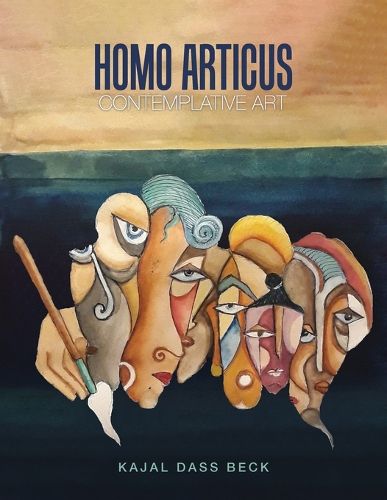Readings Newsletter
Become a Readings Member to make your shopping experience even easier.
Sign in or sign up for free!
You’re not far away from qualifying for FREE standard shipping within Australia
You’ve qualified for FREE standard shipping within Australia
The cart is loading…






This title is printed to order. This book may have been self-published. If so, we cannot guarantee the quality of the content. In the main most books will have gone through the editing process however some may not. We therefore suggest that you be aware of this before ordering this book. If in doubt check either the author or publisher’s details as we are unable to accept any returns unless they are faulty. Please contact us if you have any questions.
Homo Articus, "human as artist," is a concept that embraces the arts as integral to human nature
and encapsulates the universal idea of art as 'creative contemplation.' The contemplative artwork
by Kajal Dass Beck in this book reveals an "invisible thread" across cultural boundaries and
creatively expresses the universal human need to discover and communicate the
soul of reality. Building upon previous work with traditional designs and patterns of India, the
paintings in this book engage both Eastern and Western motifs in pioneering ways.
As Dass Beck says: "Aligning form with substance, soft with bold colors, natural with supernatural dimensions, and geometric with freeform design, these works cross boundaries of established genres and artistic orthodoxy yet challenge the perspectives of the most venturesome afficionado."
Separate or combined, her motifs appear and reappear in various configurations of abstract expression that
provoke an interior vision of beauty and aesthetic delight. In the spirit of creative contemplation, Homo Articus: Contemplative Art invites viewers to contemplate iconic shapes and vibrant color combinations in a diversity of formations.
The work is divided into two parts, the first representing non-Indian content including American, local (New Orleans), African, abstract, and other forms of modern expression. The second part focuses on the religious and cultural landscapes of India, drawing from religious traditions, village life, legends, folklore, and music. In addition to the beautiful collection of paintings, this book contains an explanatory introduction and a short autobiography by the artist.
$9.00 standard shipping within Australia
FREE standard shipping within Australia for orders over $100.00
Express & International shipping calculated at checkout
This title is printed to order. This book may have been self-published. If so, we cannot guarantee the quality of the content. In the main most books will have gone through the editing process however some may not. We therefore suggest that you be aware of this before ordering this book. If in doubt check either the author or publisher’s details as we are unable to accept any returns unless they are faulty. Please contact us if you have any questions.
Homo Articus, "human as artist," is a concept that embraces the arts as integral to human nature
and encapsulates the universal idea of art as 'creative contemplation.' The contemplative artwork
by Kajal Dass Beck in this book reveals an "invisible thread" across cultural boundaries and
creatively expresses the universal human need to discover and communicate the
soul of reality. Building upon previous work with traditional designs and patterns of India, the
paintings in this book engage both Eastern and Western motifs in pioneering ways.
As Dass Beck says: "Aligning form with substance, soft with bold colors, natural with supernatural dimensions, and geometric with freeform design, these works cross boundaries of established genres and artistic orthodoxy yet challenge the perspectives of the most venturesome afficionado."
Separate or combined, her motifs appear and reappear in various configurations of abstract expression that
provoke an interior vision of beauty and aesthetic delight. In the spirit of creative contemplation, Homo Articus: Contemplative Art invites viewers to contemplate iconic shapes and vibrant color combinations in a diversity of formations.
The work is divided into two parts, the first representing non-Indian content including American, local (New Orleans), African, abstract, and other forms of modern expression. The second part focuses on the religious and cultural landscapes of India, drawing from religious traditions, village life, legends, folklore, and music. In addition to the beautiful collection of paintings, this book contains an explanatory introduction and a short autobiography by the artist.